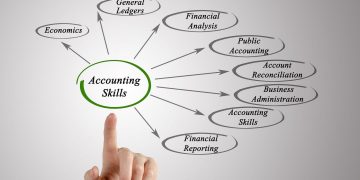A Competency Demonstration Report (CDR) is not just a formal requirement for skilled migration to Australia; it’s a powerful tool to highlight your engineering skills and experiences. Crafting a compelling CDR can significantly enhance your chances of approval from assessing authorities like Engineers Australia. In this article, we’ll explore effective strategies to showcase your engineering skills through your CDR.
1. Understand the Purpose of the CDR
Before you begin writing, it’s essential to grasp the purpose of the CDR. This document serves to demonstrate your engineering competencies in accordance with Australian standards. It needs to clearly illustrate how your qualifications and experiences align with the requirements set by Engineers Australia. Understanding this framework will help you structure your CDR effectively.
2. Know the Required Competencies
Each engineering discipline has specific competencies that must be addressed in your CDR. Familiarize yourself with these competencies, as they are the benchmarks against which your skills will be assessed.
Tips to Showcase Competencies:
- Review Competency Standards: Consult the relevant guidelines from Engineers Australia to understand the competencies required for your field.
- Reflect on Your Experience: Consider how your past projects and roles demonstrate these competencies. Be ready to link your experiences directly to the required skills.
3. Choose the Right Projects for Career Episodes
The career episodes are the heart of your CDR, allowing you to provide detailed accounts of your professional experiences. Choosing the right projects to showcase is crucial.
Tips for Selecting Projects:
- Diverse Experiences: Select projects that highlight a range of skills and competencies. This diversity can show your versatility as an engineer.
- Significant Contributions: Focus on projects where you played a key role or made a significant impact. Your contributions should clearly illustrate your capabilities and problem-solving skills.
4. Structure Your Career Episodes Effectively
Each career episode should follow a clear structure to maximize clarity and impact. The typical structure includes:
Introduction
- Briefly introduce the project, including its objectives and your role.
Background
- Provide context about the project, such as the organization, your position, and the relevance of the work.
Personal Engineering Activity
- Detail your specific contributions. This section should showcase your skills, decision-making process, and any challenges you encountered.
Conclusion
- Summarize the outcomes of the project, emphasizing your achievements and what you learned.
Tips for Structuring:
- Use Headings and Subheadings: Clearly label each section to enhance readability.
- Write in the First Person: Use first-person language to make your experiences more relatable and personal.
5. Highlight Technical Skills and Problem-Solving Abilities
Your CDR should clearly demonstrate your technical skills and your ability to solve complex problems. This is where the depth of your engineering knowledge can shine.
Tips for Emphasizing Skills:
- Be Specific: Use precise technical terminology and jargon appropriate to your field. This shows your familiarity with the discipline and establishes your credibility.
- Include Metrics: Where possible, include quantifiable results to illustrate your achievements. For example, mention how your contributions led to a specific percentage increase in efficiency or cost savings.
6. Incorporate Soft Skills
While technical skills are critical, soft skills also play a significant role in engineering. Attributes such as teamwork, communication, and leadership can set you apart from other candidates.
Tips for Showcasing Soft Skills:
- Provide Examples: Illustrate how you have successfully collaborated with others or led a project team. Use specific examples from your career episodes to highlight these abilities.
- Reflect on Challenges: Discuss challenges you faced that required strong communication or leadership skills, and explain how you addressed them.
7. Highlight Your Continuing Professional Development (CPD)
Your CPD activities are an essential component of your CDR, demonstrating your commitment to lifelong learning and professional growth. This section allows you to showcase additional skills and knowledge you’ve acquired beyond formal education.
Tips for Showcasing CPD:
- Diverse Activities: Include a variety of CPD activities such as workshops, certifications, online courses, and professional conferences. This demonstrates your proactive approach to staying current in your field.
- Link to Skills: For each CPD entry, explain how the activity has contributed to your professional development and how it enhances your engineering skills. Make clear connections to the competencies required by Engineers Australia.
8. Craft a Compelling Summary Statement
The summary statement serves as a bridge between your career episodes and the required competencies. It’s your opportunity to succinctly highlight how your experiences align with what assessors are looking for.
Tips for Writing an Effective Summary Statement:
- Directly Address Competencies: Clearly map your career episodes to the relevant competencies. Use concise bullet points for clarity and focus.
- Be Concise and Clear: Keep your summary statement focused and free of jargon. Make it easy for assessors to see the connections between your experiences and the competencies.
9. Use Clear and Professional Language
The language and tone of your CDR can significantly impact its effectiveness. Use clear, professional language throughout your report.
Tips for Effective Language Use:
- Avoid Jargon Overload: While technical terms are essential, avoid overloading your writing with jargon. Aim for clarity, ensuring that your report is understandable to a wide audience.
- Be Professional: Maintain a formal tone throughout your CDR. This includes using correct grammar, punctuation, and spelling.
10. Review and Edit Your CDR Thoroughly
Once you have drafted your CDR, the review process is vital. A well-edited document reflects professionalism and attention to detail.
Tips for Effective Review:
- Take a Break: After finishing your draft, take some time away from it before reviewing. This distance can help you catch errors and identify areas for improvement more effectively.
- Seek Feedback: Get input from peers, mentors, or professionals familiar with the CDR process. They can provide valuable insights and suggestions for enhancements.
- Check for Consistency: Ensure consistency in formatting, terminology, and style throughout your CDR.
Conclusion
Showcasing your engineering skills through a compelling CDR is essential for a successful skilled migration application to Australia. By understanding the purpose of the CDR, selecting appropriate projects, and effectively highlighting both technical and soft skills, you can create a document that truly reflects your capabilities.
Remember to leverage your Continuing Professional Development, craft a concise summary statement, and maintain professional language throughout your report. Finally, invest time in thorough reviews and edits to ensure your CDR stands out.
By following these strategies, you can increase your chances of approval and take a significant step toward achieving your goal of living and working in Australia. A well-prepared CDR not only supports your migration application but also serves as a powerful reflection of your professional journey as an engineer.














